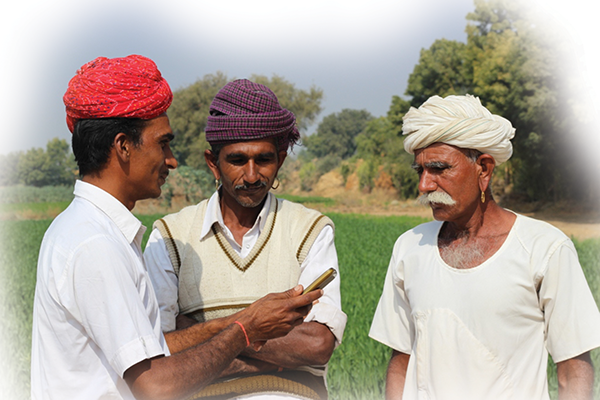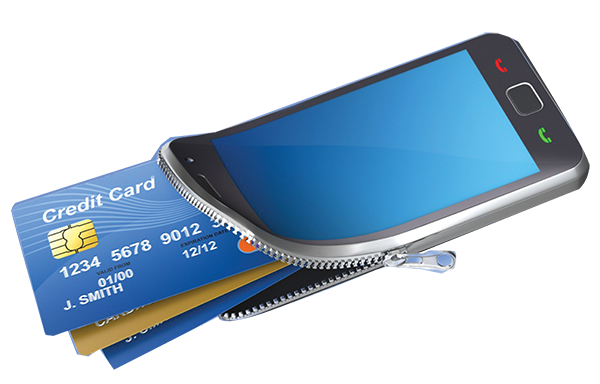The banking sector in India witnessed a rapid change during the demonetisation drive last year, which helped in the growth of digital banking. Several policy initiatives now seek to bring transparency in the financial sector. Technology is playing a major role here. After the demonetisation drive, cashless payments increased by 22% in October 2016 in comparison to October 2015. Mobile banking transactions grew 175%; while money transacted using mobile banking grew 369% from October to October, according to an IndiaSpend analysis of a Reserve Bank of India (RBI) data. In step with the Prime Minister, Narendra Modi’s ‘Digital India’ drive, banks are actively encouraging their customers to opt for mobile and internet banking.
Demonetisation brought a cashless revolution
The demonetisation drive has augmented digital transactions at all levels. Thus, a neighbourhood grocery shop now accepts payment through Paytm, a mobile wallet, while people of all age groups are learning to pay their bills through net-banking and debit and credit cards.
Seema Sarkar, a woman in her mid-40s from urban Kolkata, told BE, “I am happy that my digital skills are becoming better. Earlier, it was just for the sake of learning, but now such skills have become a necessity. I can easily transfer money through wallets and cards. It is not as tough as we used to think. Banks are also becoming digital and linking Aadhaar cards with our accounts. I hope the government makes this more secure against cyber-crime and theft.”
Saraswati Mondal, who runs a grocery shop, told BE, “Initially, we were puzzled and scared with the sudden introduction of demonetisation and payments through digital modes. Now we are perfectly fine with it. Though, payment through cash is always an easy option, payment through digital wallets or debit card is not tough. We are learning gradually.”
According to Piyush Singh, Accenture’s head of financial services business in India, “Digital banking is meant to bring the millions of unbanked Indians into the financial system and to create an easy way to transfer government benefits to the people who need them most. The aim of all of these initiatives is to bring banking and financial services to hundreds of millions of people.”
According to a recent survey conducted by ET Wealth that included 10,000 respondents (all urban internet users), 40% of the respondents prefer bank websites to branches for routine transactions as against merely 10% who go to the branch for routine transactions. About 20% prefer mobile apps while 17% and 10% prefer SMS and ATMs, respectively. It was noteworthy that 60% respondents prefer digital banking. However, when it comes to special transactions such as opening an account or getting a loan, a large number still prefer to walk down to the branch- 42% prefer to go to the bank branch for a special transaction while 27% prefer the website even for special transactions.
The penetration of digital banking has gone deeper than just big cities. Even in small towns with less than five lakh population, 38% prefer to go to the website for routine transactions while only 11% go to the branch. Even mobile apps (19%) are preferred more than branches in small towns.

New payment methods
As rural India is still trying to become familiar with the concept of digital banking, the urban and semi-urban banks are providing customer services effectively and efficiently. Nonetheless, the Jan Dhan Yojana, a programme that offers basic savings accounts with small credit lines to the unbanked, the Aadhaar, a biometric-enabled authentication system, and smart phones are enabling the rural customers to initiate their banking process and operate their account.
There was hardly any change in cheque transactions and payments in 2016. Money transfers using national electronic funds transfer (NEFT)–through which money is transferred in batches, after approval from the banks sending and receiving money–and transactions over Point of Sale (PoS) terminals (debit card swipe machines) grew 16% and 35%, respectively, in 2016 (October over October), as compared to mobile, smartphone and app-based payment platforms. Non-cash payments like NEFT, IMPS, PPI, mobile banking, PoS terminals and National Automated Clearing House (NACH) rose 6%, showing that digital transactions rose faster than consumption. Cash transactions have been reducing since January 2016. The NACH is used for making bulk transactions towards distribution of subsidies, dividends, interest, salaries, pensions, and for bulk transactions towards collection of payments pertaining to telephone, electricity and water bills, loans, investments in mutual funds and insurance premiums.
Consumers used the Unified Payments Interface, or UPI, the mobile payments platform, released in August 2016, for 300,000 transactions amounting to `90 crore in November 2016. The number grew to 1.4 million transactions, worth `480 crore, till December 25, 2016. There were 7,000 transactions, amounting to `73 lakh, in November 2016 through the Unstructured Supplementary Service Data (USSD), which uses mobile networks, and not the Internet, making it the least used digital payment platform by number and value of transactions. USSD transactions rose to 60,000 in December 2016, amounting to `6.6 crore until December 25, 2016.
Growth in digital payments has increased according to recent March 2017 data released by the RBI. The latest data show that there has been increase in digital transactions of 33% by volume and 59% by value since November 2016. The data illustrate a decisive move towards new mobile-based payment methods; with older forms of non-cash payment, like debit and credit cards, showing fewer uptakes. Card payments spiked 51% in December 2016 before declining in the following months, with latest data showing them up a modest 10% overall since demonetisation.
Avinash Luthria, Vice President and Business Head, Financial Processing & Licensing, Worldline, told BE, “Banking has obviously become more ‘digital’ in recent times, thanks to the thrust that demonetisation provided. Today, there are more than 825 million cards in the market and both debit and credit cards are being used for small and large ticket transactions. Electronic banking transactions through channels like ECS, NEFT, RTGS, IMPS etc. have grown by 118% year on year, clearly indicating a substantial rise in the use of digital channels by the consumer.
Banking has also become more inclusive with new, alternative payment methods like UPI enabling digital bank-to-bank transfers between consumers. Payments have expanded to include more digital methods like QR codes, AEPS, NFC on mobile and UPI. Indian banking is definitely going less-cash. The digital economy has grown to 15% compared to last year when only 2% of transactions in India were digital.”
Lack of training in digital banking
Information Technology solutions have given rise to a new world of internet, business networking and e-banking, thus paving the way for an efficient and speedy transaction, saving time and reducing cost. Mobile e-commerce and payments has seen unprecedented growth in recent years. Several analysts have estimated that by 2017, the mobile payments industry will be worth $1 trillion.
The internet has emerged as a blessing for the present pace of life but at the same time, also resulted in various threats to the consumers and other institutions. Hackers and crackers are growing and spreading at every corner of the world, intervening with various internet accounts through miscellaneous techniques like hacking the Domain Name Server (DNS), Internet Provider’s (IP) address, spoofing, phishing, internet phishing etc. and have been successful in gaining “unauthorised access” to the user’s computer system. Useful data have been seized to earn huge profits from customer’s accounts. Thus, technology has both positive and negative impacts.
In a developing country like India, the awareness about and the education of technology is not up to the mark. A large number of people in India do not understand the complexity of e-banking, are might be conned by hackers. Ramaswamy Venkatachalam, Managing Director – India and South Asia of Global banking and payment technology solutions provider Fidelity Information Services (FIS), opined, “Given the changes in the banking and payments sector in India, more people are moving towards digital modes like mobile wallets, Aadhaar Pay, Bharat QR, UPI, mobile and net banking.Though some people question the safety of these modes, the answer lies in understanding the technology and the business practices incorporated by the institutions that provide these services. Security over time has evolved and become better, making the customers financial data more protected. Yet, there are innumerable instances where the customers are trapped into the new technological innovations in the digital banking system.”

According to a recent survey, the biggest concern for a person in adopting mobile banking is security. New systems pose a new security threat. Compromised data not only leads to serious implications but also tarnishes the company’s image forever. This is an area that needs a lot of technical expertise and presents an opportunity for the banks to join hands with e-commerce companies. They will not only be using the established expertise but also gain easy customer insight that is critical for segmenting and targeting the users later. As Ramaswamy Venkatachalam elaborated, “Making the digital transaction safe has two aspects to it, one being the technology behind it and the other being financial literacy in the population using it. Just as people are careful while carrying their cash around and take protective measures, the same needs to be followed while doing any digital transaction. The other very important parameter in increasing safety in digital payments space is vigilance and detection of fraud at early levels, hence, integration of better and more sophisticated fraud management and mitigation are very important so that the responses for any kind of threat detected is already present in the system. Apart from this there are various other practices followed by some financial institutions such as storage of data at a consolidated level in secure servers, role based access to the employees and analysis of behavioural patterns of employees using the banking software, to keep the data of their consumers safe and secure. By improving both technology and financial literacy the digital banking and payments space will provide robust, convenient and frictionless services to people and there would be continuous rise in adoption of upcoming digital banking and payment services.”
For instance, in Rishra, a small town in West Bengal, only 32% of the population leverage the power of digital banking. “People lack basic education on how to do digital banking. Many times, there have been cases in which people didn’t know how to withdraw money from their ATMs and got their cards blocked. This resulted in a lot of chaos in the banks as the customers panic and create ruckus in banks. They need to be given proper training. We can’t just hand over a debit card to a 70-year-old man and ask him to withdraw money from ATMs. He has to be trained properly on how to use his card,” said a public sector bank official.
“People are often doubtful about digital monetary transactions. They do not trust this digital banking and turn up at banks for every small doubt. There have been many cases of frauds in which people have panicked and given their account numbers to other people in the fear that their accounts will be blocked. There was a case in which a woman who works as a maid received a message that her account will be blocked if she doesn’t give her account number quickly. She panicked and provided all the details of her account. `70,000 were withdrawn from her account. In one case, a young, educated man, lost more than a lakh due to internet fraud. People lose trust when they hear about such cases. The government has to make people aware of the ways in which they can benefit from digital banking. The concept of digital banking is very good but for that people need to be educated about it and the system has to be extremely secure,” added the official.
Add new comment